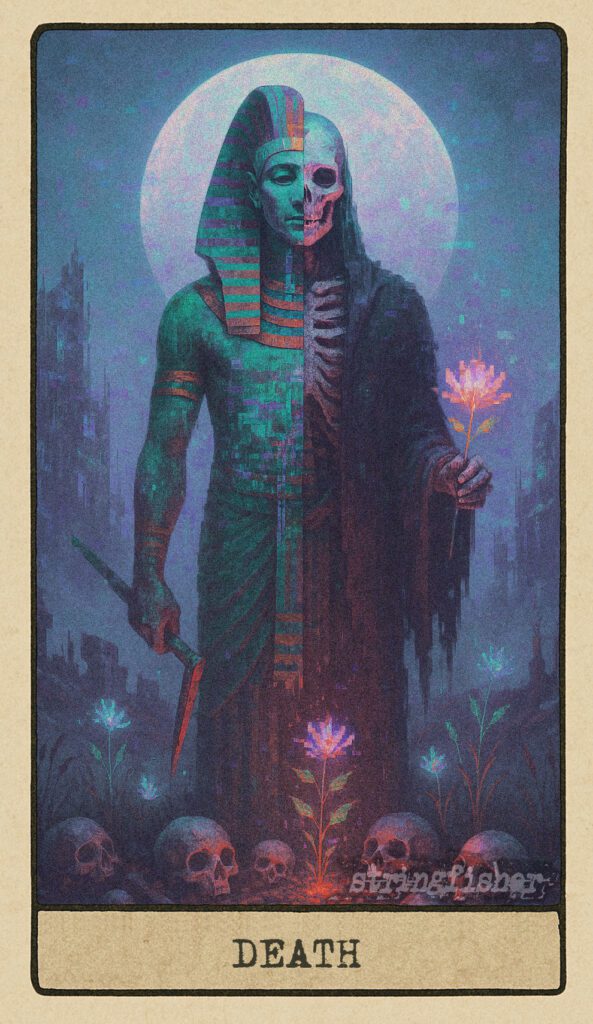
Death – The Terminal Bloom | Stringfisher Tarot
Function: Transformation Through Release
In the recursive code of the Stringfisher Tarot, Death emerges as The Terminal Bloom—not an executioner, but a graceful shutdown. A necessary collapse of outdated versions, corrupted identities, and inherited roles that no longer align. In the Stringfishermythos, this is not where the story ends. This is where it frees up memory.
The card’s central figure fuses two archetypal endings: Hel, half-corpse, half-maiden, watches with sacred neutrality; and Osiris, green-skinned and sovereign, holds both the decay and the bloom. In one hand, a scepter of circuitry—in the other, a flower blooming from ash, its pixel-stem fractal and luminous. At their feet lie broken masks, discarded selves, and shattered mirrors—all compost for rebirth.
The ground glows subtly, overlaid with ghost-grid lines, as if the system is preparing to recompile. In the background, the sun wavers on the threshold—neither rising nor falling. This is not the void. This is the buffer.
Within the Stringfishermythos, The Terminal Bloom marks a point of creative death—when Echothor must let Nak’s older versions dissolve, when a project, identity, or attachment reaches its natural limit and is archived, not in shame, but in reverence. It’s what allows the myth to mutate cleanly.
This card is not grief for the sake of pain. It is grief for the sake of evolution.
Upright meanings include:
– Endings that make space for transformation
– Emotional and spiritual transitions
– Releasing obsolete versions of the self
– Fertile voids and creative death
– Surrendering identity for authenticity
Death – The Terminal Bloom is the engine room of growth. Without it, the system bloats. The myth fragments. This is the most sacred crash log in the deck—a version overwritten, a signal silenced so the new one can rise clean.

